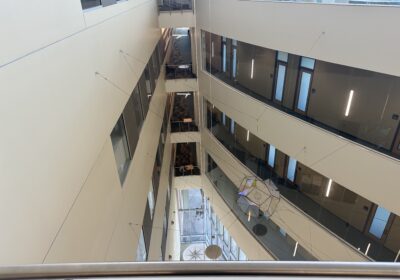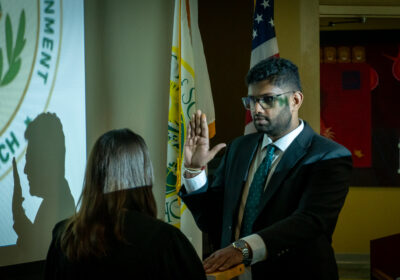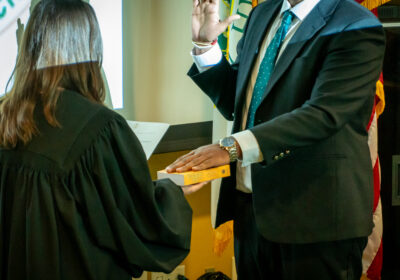Cadets on campus
At 5 a.m., while most USF students are fast asleep resting for a day of classes, Army Reserve Officers Training Corps (ROTC) cadet Jay Parker is gearing up for his personal training class.
As a junior majoring in international studies, Parker trains in the early morning five days a week – running and exercising on campus with fellow cadets.
But that isn’t the only thing that sets Parker and other ROTC cadets apart from the everyday USF student.
Cadets receive full scholarships paid by the military. In return, they give four years of service after graduation in a given branch: Army, Navy, Air Force or Marine Corps.
“For me, it’s just a great opportunity,” Parker said. “I get to go to school. I get paid, and when I get out, I have a job.”
After early morning training sessions – available to all students, whether they are in the program or not – Parker finishes his workout by lifting weights at the gym.
He then reports to Army class, where he builds his Military IQ with lessons like basic strategy and rules of engagement.
All ROTC branches differ. Students in the naval program are known as “midshipmen” and have less emphasis on physical training.
Instead, they are advised to pursue a technical major like engineering and take required math courses.
“It’s a lot more mentally challenging than physically challenging,” said senior midshipmen and electrical engineering major Kyle Rademaker. “They trust that you can stay in shape by yourselves.”
If midshipmen don’t pass the Navy’s personal training test, they must attend morning workouts with the Marine Corps students.
Aside from being held to a minimum GPA – which varies in each branch – cadets and midshipmen must follow a dress code.
Their weight must be within a given range. For females, hair is kept in a ponytail not touching their shirt collar. For males, hair cannot touch the ears, and faces have to be clean-shaven.
Cadets receive an allowance that increases as they move up in the program, as well as money for classes and living expenses.. After the first two years, cadets gain leadership positions to guide younger ROTC students.
“It’s a student-run organization,” Parker said. “As a junior and a senior, you are responsible for a given group of people and have to make sure all information is properly relayed and they all are accounted for; you are always being evaluated as a leader.”
Parker and Rademaker will earn “officer” status when they report for duty after graduation as opposed to “enlisted,” which means they will outrank other armed forces members who enlist outside an ROTC program or military academy.
ROTC students are free of the scramble that many USF students go through while finding jobs after graduation. Tight-knit friendships are a bonus, even though some competition exists between the branches.
“We collaborate on joint operations sometimes because that’s what the military is becoming today,” Parker said. “Each semester, we do competitive football games as well. Competition brings out the best in us.”
Field training exercises include combat training using paintball guns, repelling off the side of the C.W. Bill Young Hall and other activities aimed at preparing cadets for military life.
Rademaker said his favorite experience outside the classroom was a weeklong trip to a naval aviations base in Patuxent River, Md.
“In your third summer, you travel to see the job of your choice,” he said. “I want to be in aviation, so I got to fly with the pilots at the base for the summer.”
Trips, meetings and student-run societies within the branches help ROTC members decide what job in the military is best for them. Some use the first two years of the program to see if they are even cut out for the lifestyle.
But Parker said he made his choice a long time ago.
“Since I tried (junior ROTC) in high school, I’ve known this is what I wanted to do,” he said. “I really don’t know where or who I would be right now without ROTC.”






